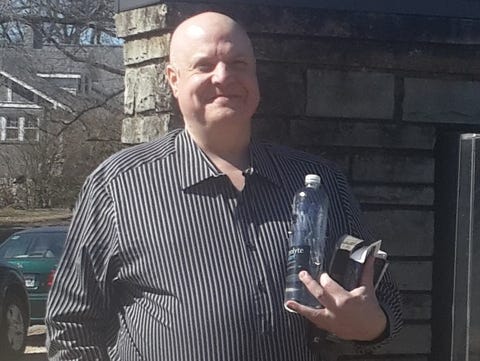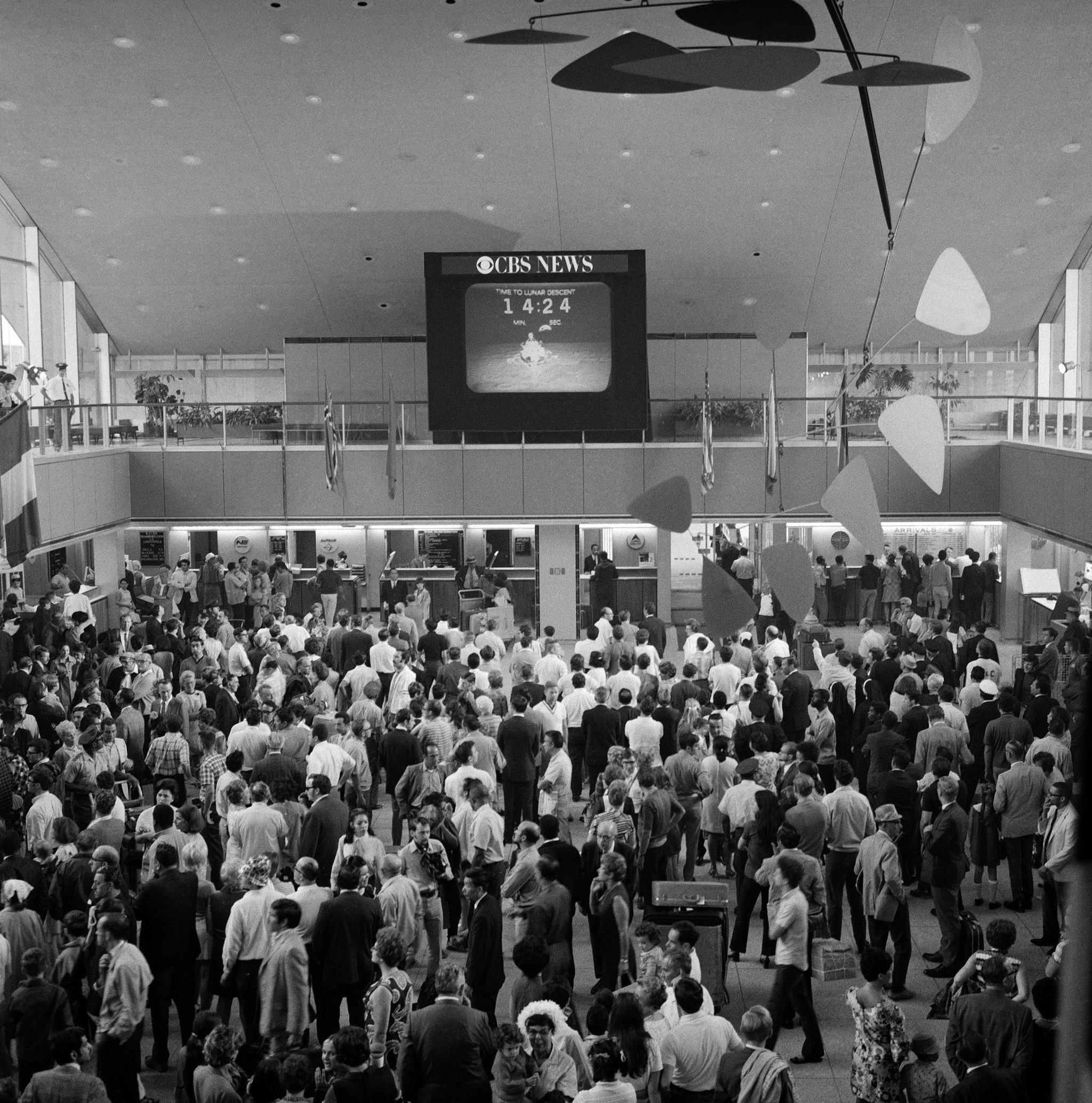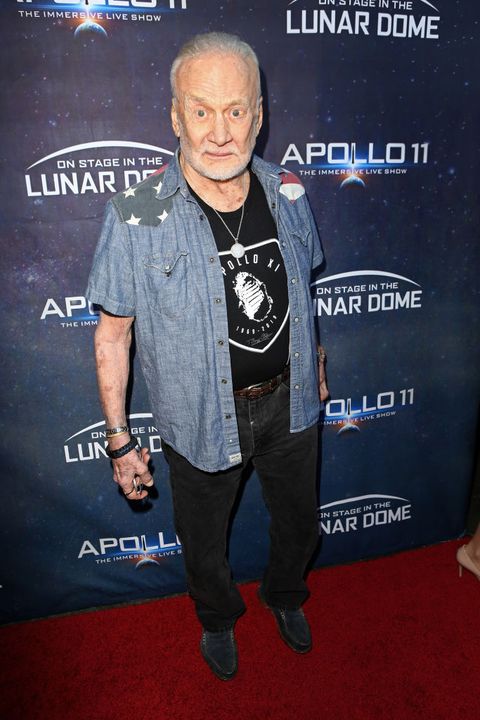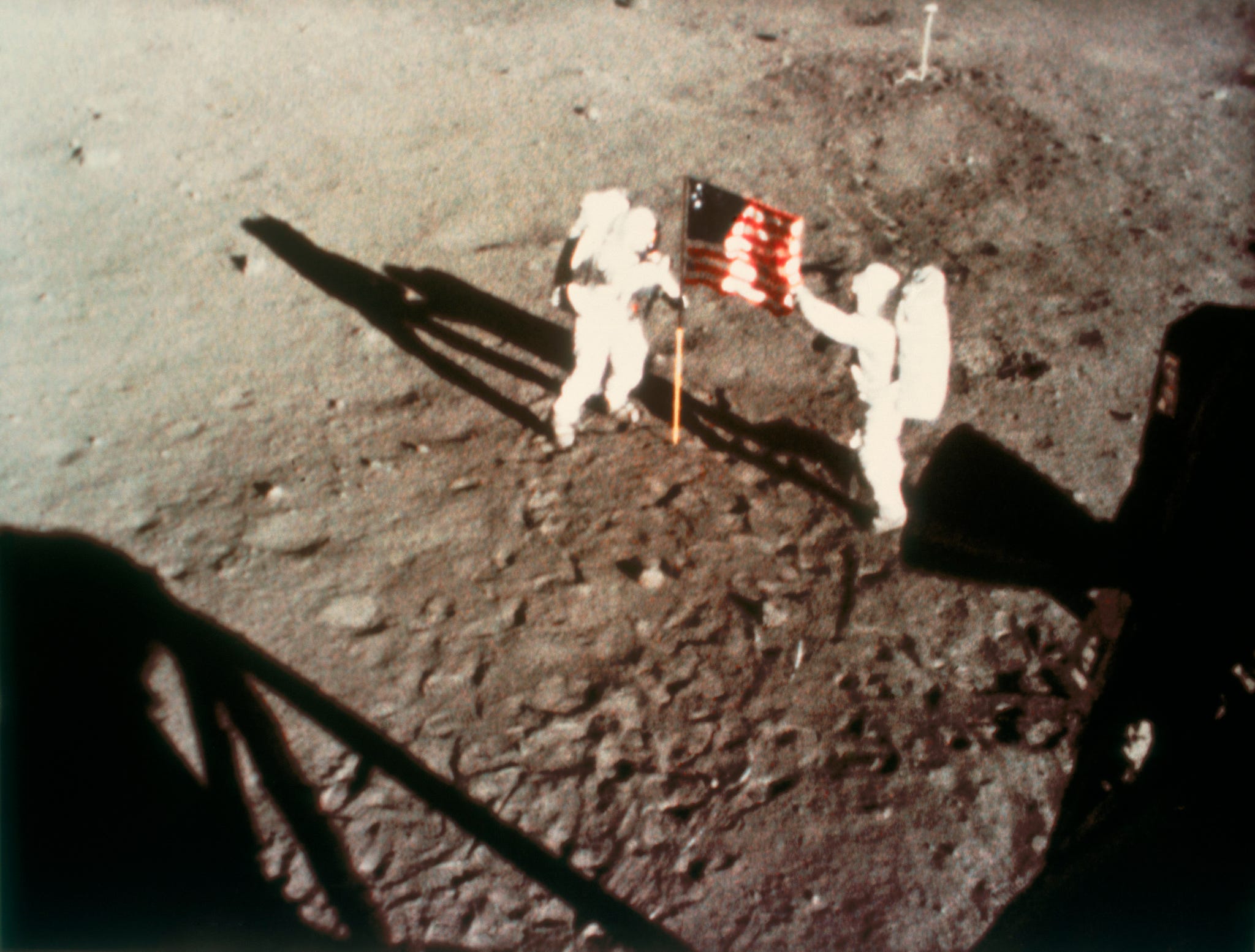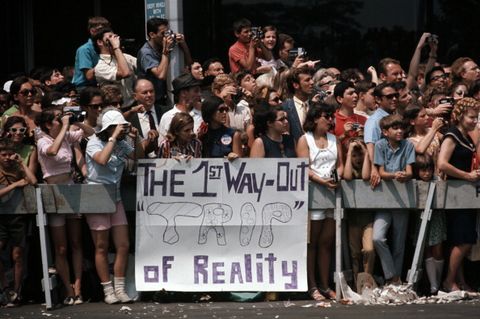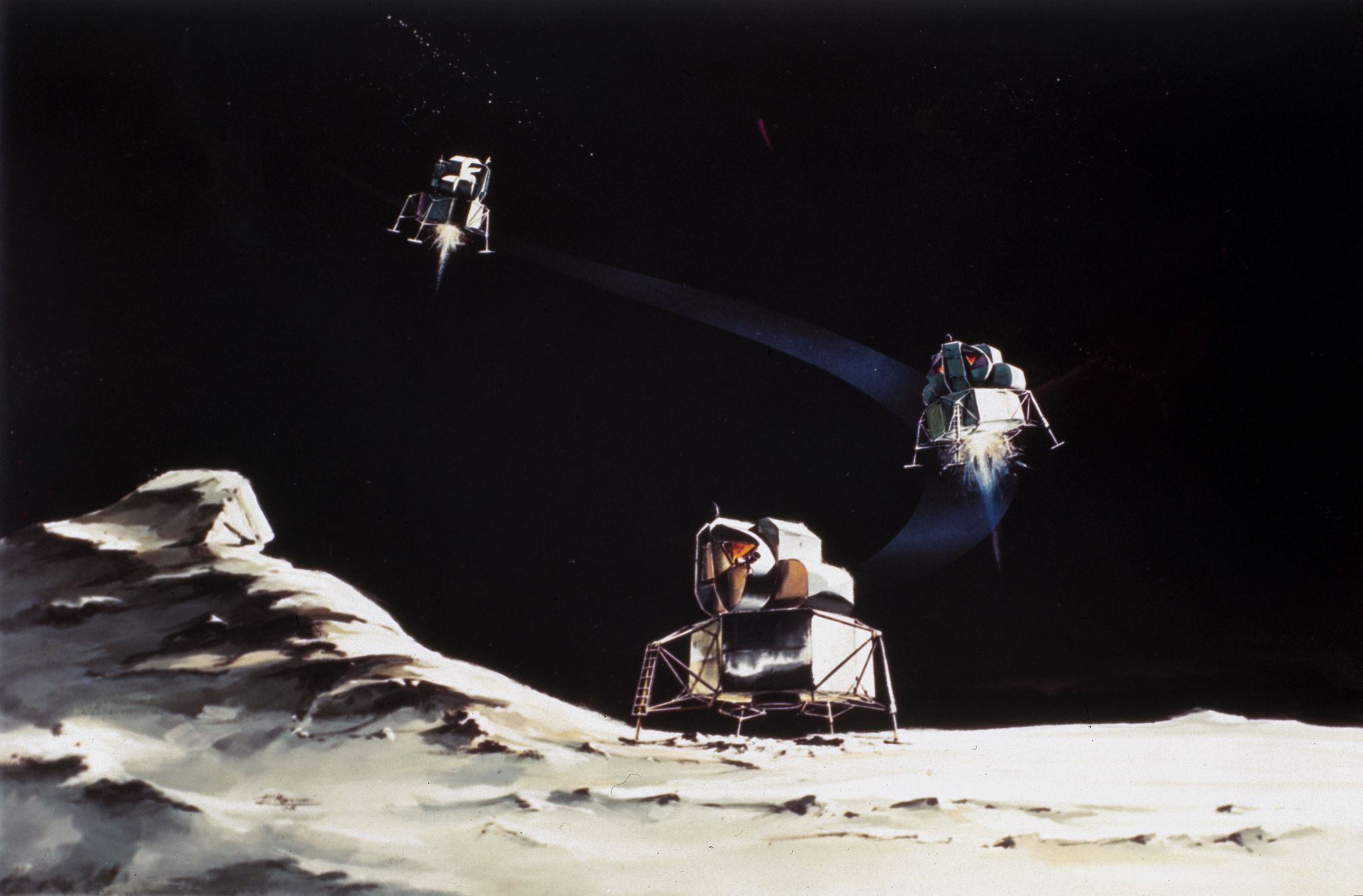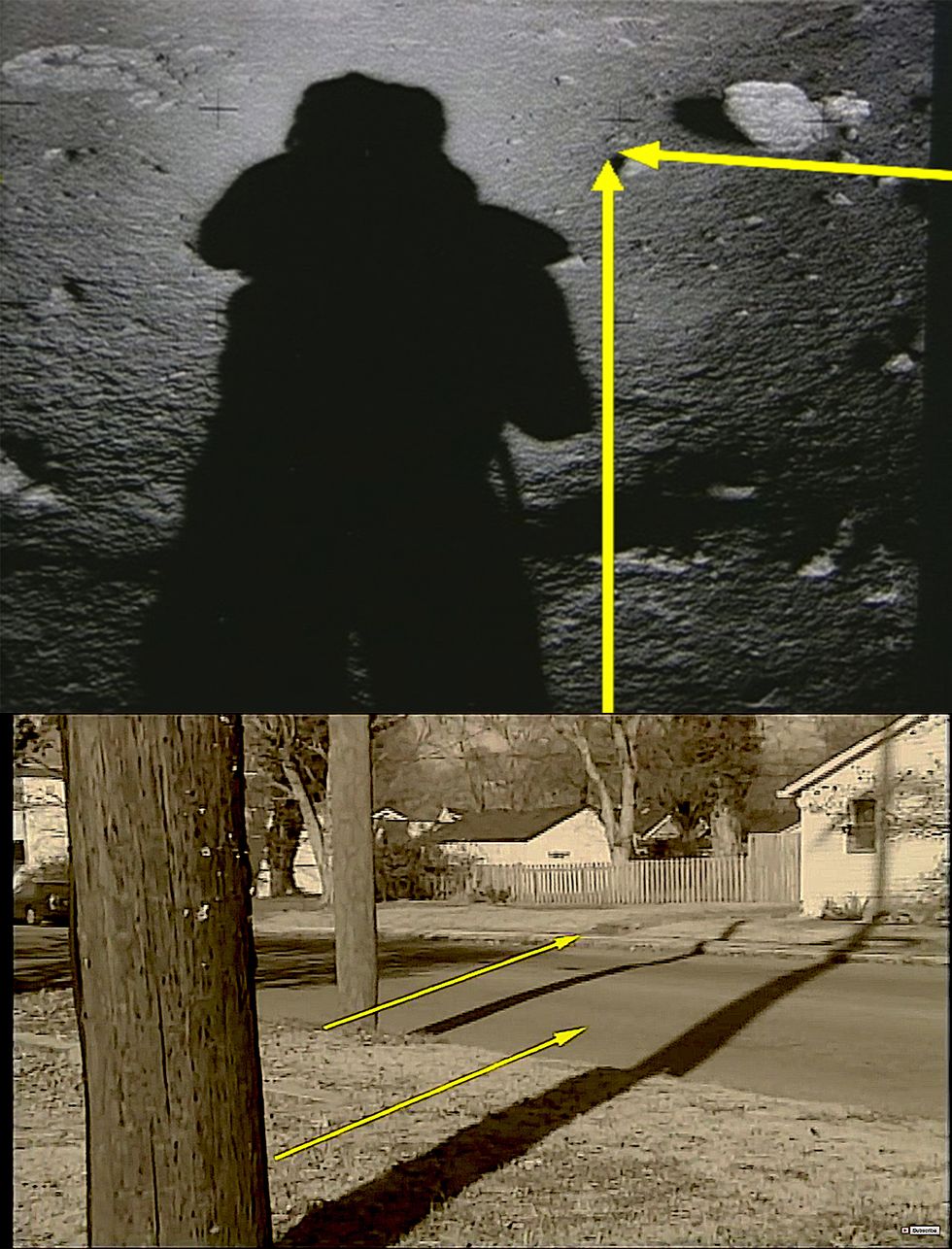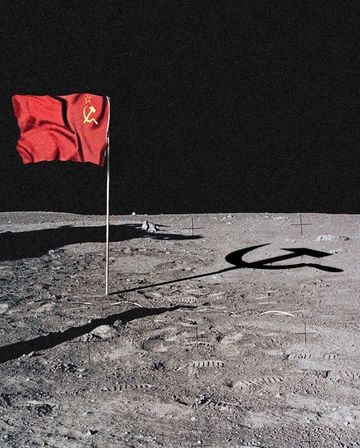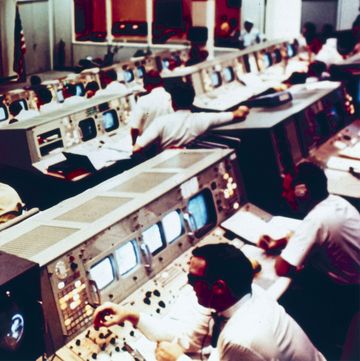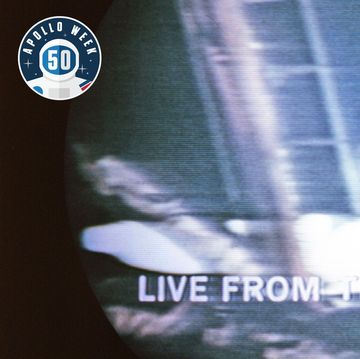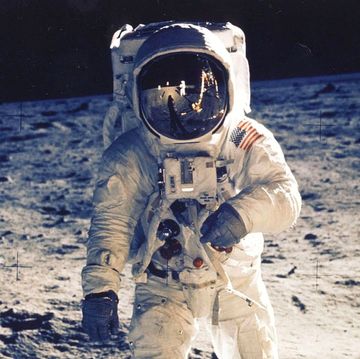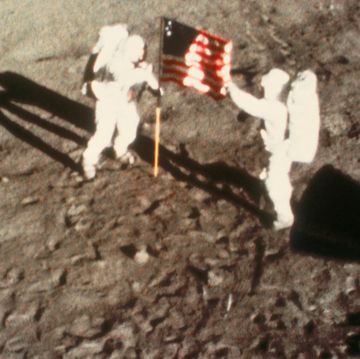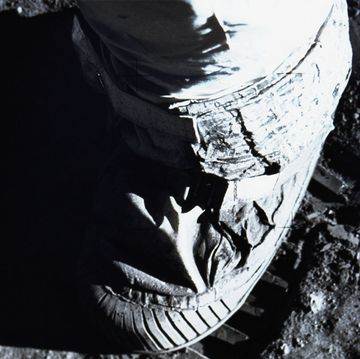Welcome to Apollo Week, celebrating 50 years since the Apollo 11 mission, explaining what it means today, and exploring how its legacy will shape the future of space exploration.
As the 50th anniversary of the Apollo 11 mission arrives this weekend, Jarrah White is ready to catch the moon landing propagandists in another lie.
There’s no shortage of ways to relive the historic milestone. In addition to big celebrations at Kennedy Space Center and other locations around the country, there will be docs and specials airing on Saturday everywhere from the Discovery Channel to CNN, HBO to BBC America.
And White won’t be missing a second of the coverage.
“I always have my video recorders ready to tape everything,” he says during a call from his home in Sydney, Australia. “I have one machine set to record ABC or SPS or Network Ten or whatever, another machine set to record the other networks, and probably a third machine to catch anything that overlaps with the other two.”
He’ll be keeping a close eye on what’s said during the anniversary coverage. “They give us little weird statements and hints here and there.”
It’s happened before, White says, like during a 2016 press conference in Sydney for the documentary Last Man on the Moon. White claims he secretly recorded Apollo 17 astronaut Gene Cernan, the 11th person to walk on the moon, saying, “I didn’t go to the moon … not to go home.”
It’s a line that Cernan has said in the past—a reference to the fact that he didn’t want to die in space—but White found something suspicious in Cernan’s hesitation.
“He said it as if he had to pause to remember,” remembers White, who is in his 30s. “It was as if he was trying to admit it right there, and had to make a clarifying statement to basically recover himself. He made that statement twice, both with that pause.”
It hasn’t been an easy summer for believers of the moon landing hoax. Stories of Neil Armstrong’s “one small step for man, one giant leap for mankind” are everywhere, with the surviving Apollo astronauts rightfully being treated like heroes. A new CBS poll found that 45 percent of Americans still consider the moon landing their biggest source of national pride. There’s so much moon fever, in fact, that even President Trump, the leading authority on fake news, applauded the “nerves of steel” of the original Apollo astronauts and promised we’d be back on the moon by 2024.
But Bart Sibrel, 54, isn’t especially interested in watching any of the mainstream retrospectives or self-congratulatory NASA events. He knows the party line they’ll be repeating. And given his history, he likely wouldn’t be welcome to any serious moon landing celebrations anyway. Certainly none with any of the original astronauts in attendance.
If you recognize Sibrel’s name, it could be for his 2001 documentary, A Funny Thing Happened on the Way to the Moon, one of the first in-depth and most influential videos attempting to discredit the moon landing. But he’s most often remembered for being the guy who got right-hooked by Buzz Aldrin.
“If I walked on the moon, if I really walked on the moon, and somebody thought otherwise, I would find that hysterically funny,” Sibrel tells me. “If someone said I did not walk on the moon when I really did, that would be like throwing a feather at me. Why would throwing a feather at me make me so violently angry that I’d punch somebody in the face?”
You could argue Sibrel was at least partly asking for it. When he confronted Aldrin outside a Beverly Hills hotel in 2002, demanding that he swear on a Bible that he'd walked on the moon and calling him “a coward and a liar and a thief,” the then-72-year-old Aldrin clocked him. After witnesses testified that Sibrel had provoked him, assault charges against the former astronaut were dropped.
Sibrel says he doesn’t hold a grudge. After all, Aldrin wasn’t the only astronaut he’s cornered with a Bible—he’s gone after Alan Bean, Eugene Cernan, and Neil Armstrong, the latter of whom told him, “Mr. Sibrel, you do not deserve answers”—and Aldrin's knuckle sandwich wasn’t even the worst threat of bodily harm.
There was the time Sibrel talked his way into the home of Edgar Mitchell, posing as a History Channel documentarian. The Apollo 14 astronaut swore on a Bible “because he’s an atheist,” Sibrel says. “Then I turned my back and he kicked me in the butt.”
When Sibrel and his crew left without removing Mitchell’s wireless mic, Sibrel claims he overheard the astronaut “discussing with his son whether or not to call the CIA to have me assassinated. Now, if I’m simply misguided, then why would the CIA be called to assassinate a journalist making a discovery that is not true?”
Sibrel possibly being threatened with a CIA hit never made national news. It definitely didn’t get the kind of headlines that Buzz Aldrin received for wearing a silver suit and crazy socks in a recent Apollo astronaut reunion photo.
So yes, it’s been a frustrating summer for people like Sibrel. But he insists it’s just business as usual.
NASA, for its part, has officially commented on the conspiracy theories only once. In response to accusations by Sibrel and others that NASA never landed men on the moon, the Agency replied with just three words back in 2001.
“Yes, we did.”
The History of a Hoax
People have been denying that we made it on the moon almost immediately after Apollo 11 landed on the lunar surface on July 20, 1969.
A New York Times writer in late 1969 claimed he encountered several barstool critics in Chicago insisting that “the Apollo 11 moonwalk last July was actually staged by Hollywood on a Nevada desert.” The next summer, the Wisconsin State Journal reported that “many skeptics feel moon explorer Neil Armstrong took his ‘giant step for mankind’ somewhere in Arizona.” One woman in Macon felt convinced that the moon landing broadcast must’ve been fake because “her set wouldn’t even pick up New York stations.”
The denial started earnest in 1974, when Bill Kaysing, a former employee for a NASA contractor, self-published a 200-page pamphlet called “We Never Went to the Moon: America’s Thirty Billion Dollar Swindle.” As NASA historian Roger Launius remarked of Kaysing’s treatise in a recent Smithsonian piece, “his rationale offered poorly developed logic, sloppily analyzed data and sophomorically argued assertions.”
Kaysing’s arguments, and the arguments of every moon landing hoaxer that came after him, touches on roughly the same talking points: NASA didn’t have the technology to get a man to the moon so they fabricated the whole thing. Movie director Stanley Kubrick may or may not have been involved. There’s plenty of anomalies if you’re willing to look: The U.S. flag that waves in the breeze (despite the lack of atmosphere), the lack of stars in any of the photos, the Van Allen radiation belts that would have killed the astronauts with lethal doses of cosmic radiation, the shadows that don’t quite line up, and so on.
Here’s the weird thing, however, about talking to moon landing deniers. If you listen to them for long enough, they start to make sense. Not complete sense; most of the more popular hoax theories have been debunked repeatedly already. But sometimes they don’t sound entirely unreasonable. You might even catch yourself saying things like, “That’s actually a good point.”
“In the entire history of the world,” Sibrel tells me, “there has never been a technological milestone that nobody could repeat years later when it should be 10 times better, a hundred times better.”
“I guess that’s true,” I say.
He continues, “Fifty years after the first atomic bomb, do you know how much more powerful they were? Ten years later, they were a hundred times more powerful! If they went to the moon with 1969 equipment, we should be in another solar system by now. We should have been on Mars 40 years ago.”
My conversation with Sibrel reminded me of going to record stores in the ‘80s and being transfixed by clerks explaining why all mainstream music is crap and only the obscure underground albums they’ve discovered are worth your time. Even if you knew better, there’s something intoxicating about the way those clerks talked to you, and how they’d make you believe you were part of a small minority smart enough to see the truth.
Moon hoaxers aren’t that far removed from record store clerks. Part of the reason people are drawn to conspiracies is that they aren’t accepted by the mainstream. German researchers from Johannes Gutenberg University found in 2017 that the “conspiracy mentality” is stronger among people who want to stand apart from the crowd and prefer to be in the minority.
The need to believe you’re among the few to figure out that the moon landing was a fraud is just the flip side of being proud that nobody else “gets” Lou Reed’s Metal Machine Music.
What It Means to Believe
Less than a decade ago, the moon hoax conspiracy seemed to be on its last legs. On an Apollo Hoax message board in 2011, one commenter remarked that he’d “read a book about modern conspiracy theorists recently, and Apollo wasn’t mentioned even once. The belief that someone else wrote the plays of Shakespeare was, but Apollo was not. No one cares anymore.”
But times have changed. Sibrel says that just two years ago, the majority of emails he received were critical.
“They were very violent and vulgar,” he says. “I’d get emails saying they wished they could watch me and my family burned alive before their eyes. But for some reason, in the last two years, the paradigm shifted. And now 90 percent of the emails I get are saying, ‘Keep up the good work! You’re a hero! Thanks for opening our eyes! I used to believe the moon landing was real, but now I know better!’”
There are more believers than ever, but not all of them are as committed.
When NBA superstar Stephen Curry hinted during a podcast interview that the moon landing might’ve been staged, he quickly backpedaled after talking with former NASA astronaut Scott Kelly. “It was a very unfortunate situation for me, because it was a comment that was made in jest and not to be taken seriously,” the Golden State Warriors point guard admitted.
Shane Dawson, one of the most popular conspiracy peddlers on YouTube, danced around his moon landing skepticism, concluding only that “I kind of believe it.” But his 6-minute video has over 7 million views, a far cry from even Sibrel’s most ambitious effort, a 47-minute doc that’s managed just two millions views in six years.
Things are far more complicated for moon hoaxers in 2019 than they were in 2001, when the biggest competition was Fox News trying to steal their thunder and Buzz Aldrin throwing punches.
Today, there are the Flat-Earthers.
“If you think the Earth is flat,” White tells me, barely able to mask the contempt in his voice, “then I don't consider you a serious researcher. I think you are a kindergarten dropout. Serious hoax researchers, they base their evidence on scientific and photographic anomalies and go where the evidence takes them. Flat-Earthers preemptively deny space travel in general because any photos of the Earth from space contradict their religion.”
Flat-Earthers are a problem, White says, because they try to piggyback on moon landing hoax theories.
“They’ve hijacked our materials, essentially,” he says. “I can’t tell you how many times I’ve come across our interviews and videos uploaded to YouTube with ‘Flat Earth’ misleadingly added to the title description.”
The struggle is real. But hoaxers, at least those trying to stay relevant, refuse to be complacent. They’re not resting on the moon fakery evidence they’ve already tirelessly exposed. It’s about finding the next clue, the next accidental slip of the tongue from some NASA co-conspirator.
James Fetzer, 78, a retired philosophy professor from Minnesota turned full-time conspiracy theorist, is pretty sure NASA gave it all away in 2016, when the Agency offered a “$30,000 reward for anyone who could help them solve their space poop problem,” Fetzer says.
“It turns out that the space diapers that NASA was using would only work up to 14 hours or so,” he says. “And they needed an improvement waste disposal system. That’s terribly revealing because these flights back and forth to the moon took 7 or 8 days. Which means that the whole NASA claim about the Apollo flights is nothing but a gigantic pile of space poop.”
That’s not entirely accurate. The pre-2016 diaper, i.e. the Maximum Absorbency Garment, was flawed but manageable, and embarrassing enough that a 2008 Science Channel documentary series revealed that astronauts needed to be fitted for a condom-like attachment to the pee pouch. If they weren’t entirely truthful about their anatomical size, it could cause “liquid leakage” that might damage their suits and interfere with missions.
Not exactly the smoking gun that moon hoaxers had been waiting for.
White, who first discovered the moon hoax after reading the 1992 book NASA Mooned America! by Ralph René, has devoted much of his energy to keeping the late author’s self-published book in print.
“I’m working on an updated edition of René’s book,” he says. White befriended the controversial conspiracy theorist several decades ago, and after René’s suicide in 2008—he explained in his goodbye note that “I always did my best for my friends, my fans and the world in general, sometimes with detriment to myself”—White became determined to keep his mentor’s words alive.
“Obviously I can’t change René’s words other than some footnotes here or there.” White says. “But it’ll have my commentary chiming in when necessary to either add additional information or discussing developments that have occurred in the years since René has passed away.”
It’s not a money-making scheme. In fact, none of White’s conspiracy-exposing efforts have given him a meaningful income.
“If anybody thinks, ‘You’re just doing it for the money,’ I’d like to see you fork over hundreds and hundreds of dollars to keep all these books in print and get them all personally bound, just so they’re on the market,” he says.
White has never made a dime from his moon hoax theories. “I have a little business of cleaning and transferring VHS tapes,” he says. “It gets me some money on the side.”
The same is true for Sibrel, who NASA historian Roger Launius recently called a “professional moon landing denier.”
“It’s not my full-time job,” Sibrel says. “I used to make a little money from my YouTube channel, but they demonetized me a year ago.” Now, he’s trying to launch a software company in Israel, and working on another book that he says will be his “last statement” on the moon conspiracy.
“I have a source who was there when they filmed the fake moon landing,” Sibrel tells me. “He was in charge of security for the event and has a personal, handwritten list by President [Lyndon B.] Johnson of who was allowed into the facility as a guest observer and who was not.”
This unnamed source approached him, Sibrel says, “because he saw me on television and because of the passion and zeal and sincerity he saw in me, he wanted to tell me these things before he died. He felt guilty that he’d participated in the fraud.”
In all of Sibrel’s explanations of secret project code names, Johnson’s inner circle, and mysterious sources who somehow decided to spill the beans just to him, he mentions something in passing that gives me pause.
“It’s scary because what I’m publishing is enough to rock the government's boat, and my wife and I are trying to have a baby.”
Sibrel doesn’t offer more details on his parenting plans, but to me it speaks volumes. He can talk endlessly about how the government is corrupt and nobody can be trusted and the entire foundation of modern science is built on a house of cards. But wanting to be a father means that despite all the lies and deception and smoke and mirrors, he has hope. Some small part of him must believe the world isn’t a completely horrible place.
“I guess so,” Sibrel says. “I mean, there are many black Americans who thought we would never see a black president in our lifetime. Fortunately they were wrong. Not that I’m saying Obama is a good person or a bad person, but at least it proved that it was possible. He proved that we’ve overcome racism by at least a 51 percent margin.”
I could quibble with that comparison—we might learn what really happened on the moon in 1969 because Obama beat racism? But, oh boy, where to begin?
The Dream of the Deniers
A conversation with moon landing hoaxers gets substantially more interesting when you stop asking about what they don’t believe and start asking what they do believe.
In between talking about integral fluxes for protons and how the boiling point of water is lowered to subzero temperatures in a vacuum, White mentions almost offhandedly that “I still dream about being the first man on Mars.”
His astronaut ambitions are not a small part of why he started investigating the moon hoax theory in the first place. He doesn’t just want to prove that the 1969 moon landing was impossible. He wants to prove it was impossible so that “NASA stops keeping us in this fantasy and we finally solve the radiation hazard problem and actually get to the moon and Mars for real.”
White is intrigued by Elon Musk’s space shuttle ambitions, so much that he’s actually trying to help. That’s not a joke. Earlier this month, White received a degree in astrophysics (although from what institution he never mentions) and he’s deadly serious about understanding the science of lunar exploration and how he can participate.
“When I theorized how to pull off [Musk’s] Mars mission, I considered a small cabin completely surrounded by two meters of water,” he says. “Musk, on the other hand, claimed that only a column of water on one side of the cabin pointed to the sun would be necessary. This is a common misconception.”
This wouldn’t protect astronauts from the radiation belts around planets, White says. So he sent Musk several messages “warning him of the dangers of radiation and how his column of water must completely surround the crew.”
Musk never responded, but soon afterward, White says, the SpaceX CEO “stated in a press conference that he learned his shield must completely surround the crew. He didn’t mention me or even acknowledge reception of my emails, but he echoed my criticisms nearly word for word.”
Nine years ago, White launched a fundraiser called “Fly Jarrah White to the Moon,” in which he attempted to raise $200 million for two tickets aboard the Soyuz spacecraft. His goal was to invite an Apollo propagandist to join him on a space mission that would result in “inevitable death by space radiation.” As he wrote in the fundraiser’s home page, White was “willing to lay his life on the line for the sake of the truth.”
His feelings have changed in recent years. He now has his sights set on Musk, who promised that tickets to the moon or Mars could cost just $500,000 each on SpaceX flights. White hasn’t changed the wording on his fundraiser—he still describes it as essentially a suicide mission—but you can't mistake his enthusiasm.
“Musk’s ideas can be a bit off target but the rockets he’s proposing to build … they’re theoretically possible.”
There’s a pause in White’s voice, just like the one he heard in Gene Cernan’s “I didn’t go to the moon” remark. Is it uncertainty? Suspicion? Or maybe the cautious excitement of a man who’s finally ready to believe that astronauts just might make it to the moon?
And Now...A Word From Bart Sibrel
(Before agreeing to our interview, Mr. Sibrel requested that we give him the opportunity to present his case to our readers. Below are two photos, provided by Sibrel, and an explanation from him as to why it proves his theories. The opinions expressed by Sibrel are his alone and do not reflect the opinions or views of Popular Mechanics...because obviously.)
The above two photographs are all the proof you need that the moon missions were indeed falsified. Not a single critic has ever explained, in this federal government's alleged picture from the moon, how two shadows in sunlight can intersect at ninety-degrees from objects five feet apart from one another, when sunlit shadows should run parallel. Go outside yourself and see if this can ever take place in sunlight. It is completely impossible. This photograph can only be duplicated with electrical light inside of a television studio. As a filmmaker, I know.
[Editor's note: This question has been addressed by critics. Short answer: There were multiple light sources.]
What the United States government is claiming is that they sent astronauts one thousand times farther than they can send them today, with fifty year older technology, and on the very first attempt, with all of NASA containing one-millionth the computing power of a cell phone.
The alleged moon landings are the only technological claim in the entire history of the world that was not far surpassed fifty years later, much less not even able to be duplicated by any nation on earth. It is also the only time that such claimed expensive technology was deliberately destroyed afterwards, only done so to hide the evidence of the fraud.
If Toyota claimed they made a car fifty years ago that could travel 50,000 miles on one gallon of gasoline, yet today their best car can only go 50 miles per gallon, one-thousandth the distance, you would laugh at the obviousness of the forgery. If it were not for people’s emotional attachment to the alleged moon landings, this fifty-year unrepeatable claim, also with only one-thousandth the distance capable five decades later, would also be easily recognized as the fraud that it sadly is.
This truth is being deliberately repressed to hide the enormous and arrogant corruption of the federal government.


